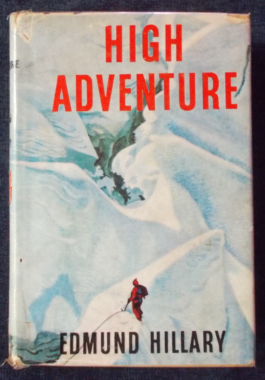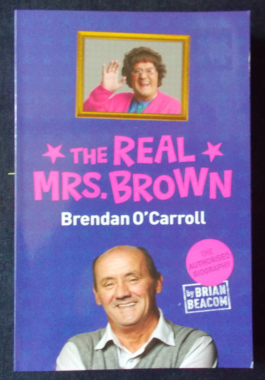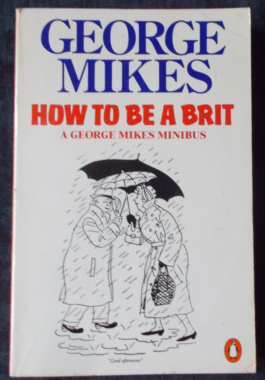-
 Take a trip back to the days of real music, live music, satin flares, platform boots and - Slade, the most successful rock/glam band out of the U.K. . Noddy Holder, flamboyant lead singer - always recognisable in his cool hats - tells his fascinating story. Famous for rocking a generation with hits such as Mama Weer All Crazee Now, Cum On Feel The Noize, Far Far Away and of course Merry Christmas Everybody Slade challenged Gary Glitter, Elton John and The Sweet throughout the 1970s and into the 1980s for the biggest hits and the most glam outfits. Success in America in the 1980s brought them some of their biggest hits and touring with luminaries like Aerosmith, Santana and Sly and the Family Stone. Noddy eventually left Slade in 1990s to enter the world of TV and radio and in 1999, he was awarded an MBE in the Millennium Honours List. He tells it in a good-humoured, down-to-earth style. Features black and white photographs.
Take a trip back to the days of real music, live music, satin flares, platform boots and - Slade, the most successful rock/glam band out of the U.K. . Noddy Holder, flamboyant lead singer - always recognisable in his cool hats - tells his fascinating story. Famous for rocking a generation with hits such as Mama Weer All Crazee Now, Cum On Feel The Noize, Far Far Away and of course Merry Christmas Everybody Slade challenged Gary Glitter, Elton John and The Sweet throughout the 1970s and into the 1980s for the biggest hits and the most glam outfits. Success in America in the 1980s brought them some of their biggest hits and touring with luminaries like Aerosmith, Santana and Sly and the Family Stone. Noddy eventually left Slade in 1990s to enter the world of TV and radio and in 1999, he was awarded an MBE in the Millennium Honours List. He tells it in a good-humoured, down-to-earth style. Features black and white photographs. -
 Published in 1974, McNally intended his book to be a timely warning to the Government and the people of Australia about the unchanging and dangerous attitude of our nation toward the Australian indigenous people. He thoroughly researched the neglected status of Aboriginal equality and the double standards and hypocrisy which he felt drew a parallel between Australia and Nazi Germany, the United States or Rhodesia and other nations whose racial persecution policies Australians professed to abhor. He also examines the case of an Aboriginal girl who was raped by a white man and who sought medical attention at a hospital, where the staff handed her over to the police. The girl was charged with crimes she never committed by a sadistic and omnipresent police force over which the Commissioner of Police claimed to have little control. With black and white photographs.
Published in 1974, McNally intended his book to be a timely warning to the Government and the people of Australia about the unchanging and dangerous attitude of our nation toward the Australian indigenous people. He thoroughly researched the neglected status of Aboriginal equality and the double standards and hypocrisy which he felt drew a parallel between Australia and Nazi Germany, the United States or Rhodesia and other nations whose racial persecution policies Australians professed to abhor. He also examines the case of an Aboriginal girl who was raped by a white man and who sought medical attention at a hospital, where the staff handed her over to the police. The girl was charged with crimes she never committed by a sadistic and omnipresent police force over which the Commissioner of Police claimed to have little control. With black and white photographs. -
 A second volume of letters to that august, imposing publication, The Times from the early 1900s up until the 1980s - not only from the man in the street, but from luminaries such as Evelyn Waugh (earning an honest dollar); Sir Thomas Beecham (on tempo, naturally); Agatha Christie (on Shakespeare); Joyce Grenfell ('glamouramas') Robert Graves, author of I, CLaudius (on the bliss of being ignored) and so many more. Other topics that have stirred a letter to The Times: trouser turn-ups; the origin of marmalade; the whereabouts of Ruritania; hygiene and the Communion cup; top hats; how to get a message to an express train (pre-mobile phone days...); Oliver Cromwell's head; the sinking of the Titanic and perfect manners. Great for the social historian - or just for fun.
A second volume of letters to that august, imposing publication, The Times from the early 1900s up until the 1980s - not only from the man in the street, but from luminaries such as Evelyn Waugh (earning an honest dollar); Sir Thomas Beecham (on tempo, naturally); Agatha Christie (on Shakespeare); Joyce Grenfell ('glamouramas') Robert Graves, author of I, CLaudius (on the bliss of being ignored) and so many more. Other topics that have stirred a letter to The Times: trouser turn-ups; the origin of marmalade; the whereabouts of Ruritania; hygiene and the Communion cup; top hats; how to get a message to an express train (pre-mobile phone days...); Oliver Cromwell's head; the sinking of the Titanic and perfect manners. Great for the social historian - or just for fun. -
 Fear lives among Everest's mighty ice-fluted faces and howls across its razor-sharp crags. Gnawing at reason and enslaving minds, it has killed many and defeated countless others. But in 1953, Edmund Hillary and Tenzing Norgay stared into its dark eye and did not waver. On May 29, they pushed spent bodies and aching lungs past the achievable to pursue the impossible. At a terminal altitude of 29,028 feet, they stood triumphant atop the highest peak in the world. With nimble words and a straightforward style, New Zealand mountaineering legend Hillary recollects the bravery and frustration, the agony and glory that marked his Everest odyssey.
Fear lives among Everest's mighty ice-fluted faces and howls across its razor-sharp crags. Gnawing at reason and enslaving minds, it has killed many and defeated countless others. But in 1953, Edmund Hillary and Tenzing Norgay stared into its dark eye and did not waver. On May 29, they pushed spent bodies and aching lungs past the achievable to pursue the impossible. At a terminal altitude of 29,028 feet, they stood triumphant atop the highest peak in the world. With nimble words and a straightforward style, New Zealand mountaineering legend Hillary recollects the bravery and frustration, the agony and glory that marked his Everest odyssey. -
 As the dark storm clouds of World War II gathered over Europe, some 10,000 young German, Austrian and Czech Jews fled Nazi oppression in their homeland to seek refuge in Britain, America and Australia. Leaving behind their parents, families and everything familiar they fled to an unknown country and future in their fight for survival. Theses is the wartime stories of the Kindertransports and other child and teen refugees; as well as the trials and eventual triumphs of young people who survived the Nazi camps, or were in hiding - and who migrated to the same destinations, sponsored by private and government agencies, in the post-war era. Both groups have added richly to the life of their host countries. Some of the accounts are very strange indeed. Like that of the Dunera Boys - low category enemy aliens shipped from Britain to Australia, where they were interned for nearly two years 'by mistake.' Even stranger is the saga of the renowned (non-Jewish) Vienna Mozart Boys Choir, who had the misfortune to be touring Australia when war began. The stories have a common thread of resilience and courage in adversity; as do that of the parents whose courage and sacrifice sent their children away in the hope of a better future. With black and white photographs.
As the dark storm clouds of World War II gathered over Europe, some 10,000 young German, Austrian and Czech Jews fled Nazi oppression in their homeland to seek refuge in Britain, America and Australia. Leaving behind their parents, families and everything familiar they fled to an unknown country and future in their fight for survival. Theses is the wartime stories of the Kindertransports and other child and teen refugees; as well as the trials and eventual triumphs of young people who survived the Nazi camps, or were in hiding - and who migrated to the same destinations, sponsored by private and government agencies, in the post-war era. Both groups have added richly to the life of their host countries. Some of the accounts are very strange indeed. Like that of the Dunera Boys - low category enemy aliens shipped from Britain to Australia, where they were interned for nearly two years 'by mistake.' Even stranger is the saga of the renowned (non-Jewish) Vienna Mozart Boys Choir, who had the misfortune to be touring Australia when war began. The stories have a common thread of resilience and courage in adversity; as do that of the parents whose courage and sacrifice sent their children away in the hope of a better future. With black and white photographs. -
 Who'd have thought a Dublin mammy with a cream cardigan and elasticated tan tights could storm British TV screens and leave a nation helpless with laughter? Brendan O'Carroll saw his TV show Mrs. Brown's Boys become a number 1 ratings success. But he had to battle hard for success. The youngest of eleven children, his mother was Maureen O'Carroll, a former nun who went on to become the first woman to be elected to the Irish parliament. Brendan adored his strong, widowed mother - and she later became the inspiration for his indomitable character Agnes Brown. The family endured poverty reminiscent of Angela's Ashes and Brendan saw no option but to leave school at 12 to work. He married young and for decades struggled to make ends meet. Eventually, bankrupt and desperate, Brendan went to see a fortune teller who told him she could see his future achieving worldwide success as a comedian and actor. At first Brendan laughed at the notion, but then he thought of how much his friends loved his gags, and decided to give it a go...A magical story of how a lovable Irishman with a wig and with a wit as caustic as battery acid surprised everyone - most of all himself - by becoming one of the best-loved comedians in the world. It is also a story of hardship, heartbreak and talent - a reminder that sometimes facts can be even more extraordinary than fiction.
Who'd have thought a Dublin mammy with a cream cardigan and elasticated tan tights could storm British TV screens and leave a nation helpless with laughter? Brendan O'Carroll saw his TV show Mrs. Brown's Boys become a number 1 ratings success. But he had to battle hard for success. The youngest of eleven children, his mother was Maureen O'Carroll, a former nun who went on to become the first woman to be elected to the Irish parliament. Brendan adored his strong, widowed mother - and she later became the inspiration for his indomitable character Agnes Brown. The family endured poverty reminiscent of Angela's Ashes and Brendan saw no option but to leave school at 12 to work. He married young and for decades struggled to make ends meet. Eventually, bankrupt and desperate, Brendan went to see a fortune teller who told him she could see his future achieving worldwide success as a comedian and actor. At first Brendan laughed at the notion, but then he thought of how much his friends loved his gags, and decided to give it a go...A magical story of how a lovable Irishman with a wig and with a wit as caustic as battery acid surprised everyone - most of all himself - by becoming one of the best-loved comedians in the world. It is also a story of hardship, heartbreak and talent - a reminder that sometimes facts can be even more extraordinary than fiction. -

 This biography covers Grant's youth and young manhood from 1822 to 1861. The narrative covers from Grant's birth, his days at West Point; his courtship and marriage, his experiences during the Mexican war, and his subsequent time as a civilian before his comeback as a soldier during the Civil War. His main ambition to become a mathematics tutor at West Point, yet he was diverted into a war of aggression and territorial acquisition which he believed to be fundamentally immoral.Written with the assistance of Lewis' friend and colleague, noted Civil War historian, Bruce Catton, who would go on to write two more volumes covering Grant's wartime career, Grant Moves South and Grant Takes Command finishing the originally-intended trilogy.
This biography covers Grant's youth and young manhood from 1822 to 1861. The narrative covers from Grant's birth, his days at West Point; his courtship and marriage, his experiences during the Mexican war, and his subsequent time as a civilian before his comeback as a soldier during the Civil War. His main ambition to become a mathematics tutor at West Point, yet he was diverted into a war of aggression and territorial acquisition which he believed to be fundamentally immoral.Written with the assistance of Lewis' friend and colleague, noted Civil War historian, Bruce Catton, who would go on to write two more volumes covering Grant's wartime career, Grant Moves South and Grant Takes Command finishing the originally-intended trilogy. -
 What did Peter Sellers do on the last day of his life? Why were some of his marriages unsuccessful and painful? What was really his relationship with his children? Above all, whence sprang the genius for comedy that made him a great and memorable star? Aided by hiterto highly confidential information and candid revelations by Lynne Fredericks, Seller's widow and the last of his four wives, Alexander Walker has compiled an incisive portrait of the complex and contradictory Peter Sellers - his mother dominated youth; his impulsive romances (real and imaginary) his tortured genius and reckless behaviour. With black and white photographs.
What did Peter Sellers do on the last day of his life? Why were some of his marriages unsuccessful and painful? What was really his relationship with his children? Above all, whence sprang the genius for comedy that made him a great and memorable star? Aided by hiterto highly confidential information and candid revelations by Lynne Fredericks, Seller's widow and the last of his four wives, Alexander Walker has compiled an incisive portrait of the complex and contradictory Peter Sellers - his mother dominated youth; his impulsive romances (real and imaginary) his tortured genius and reckless behaviour. With black and white photographs.



